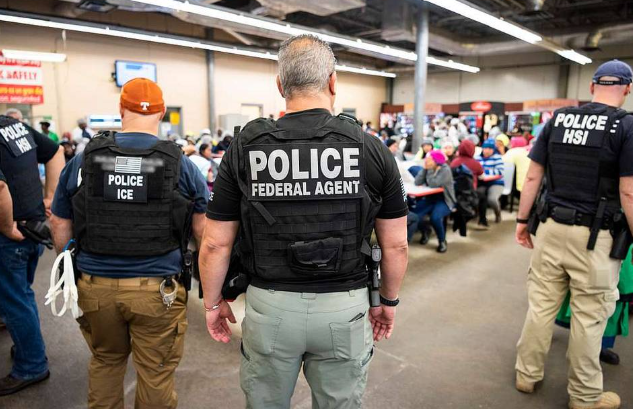
It began with the hum of unmarked SUVs pulling up onto bustling streets, then several heavily armed agents stepped out. By the end of the weekend, Charlotte’s immigrant neighborhoods were subdued. In “Operation Charlotte’s Web,” federal agents arrested at least 81 in just five hours, part of a wider sweep that has now reached 130 arrests. The sudden escalation leaves residents, business owners, and community leaders grappling with fear, uncertainty, and economic disruption-while also stirring up solidarity and rapid mobilization.

1. The Shockwave Through Charlotte’s Communities
Charlotte, North Carolina’s largest city, is known for its diverse and steadily growing immigrant population. Over the weekend, however, videos showed people being chased or pulled from vehicles outside local businesses. Even U.S. citizens, like Willy Aceituno, a Honduran-born resident, were detained. “I am a citizen,” he yelled as agents smashed his truck window and cuffed him. The popular Manolo’s Bakery, which had never closed in 28 years, did so after agents tackled people outside. “We need to protect our families [from] family separation,” explained owner Manolo Betancur.

The raids have disrupted commerce in immigrant enclaves. Laundromat owner David Rebolloso said he’s experienced a steep drop in customers-many of whom are construction workers who are afraid to leave home. “People are nervous just because of the tactics,” he said. City council member James Mitchell Jr. recalled how one dry cleaner went from 26 workers to just three in one morning. Such closures and absences make clear how enforcement operations can have ripples through local economies, with effects extending beyond undocumented residents to entire neighborhoods.

3. Aggressive Tactics and Public Backlash
Governor Josh Stein called for residents to “bear witness” and document any inappropriate behavior. Agents have been reported targeting churches, apartment complexes, and even grocery stores. State representative Aisha Dew wondered why border patrol were present in a non-border state: “I’m not quite sure what border we’re patrolling here.” Mecklenburg County Sheriff Gary McFadden said again that he wouldn’t cooperate with ICE or CBP and added that while some are welcoming the raids, others are “living in fear and anxiety for the rest of this week, maybe the rest of this year.”

4. Psychological Toll on Immigrant Communities
One result of increased immigration enforcement is that it hurts mental health for both undocumented individuals and U.S.-born Latinos, studies have found. As once said by sociologist Asad L. Asad, “Latinoswho are thought of as undocumented or otherwise ‘illegal’feel threatened by deportation, even when they are citizens.” Generally, a sense of constant fear linked to separation from one’s family, avoiding public places, and changes in everyday routine can triple the odds of high psychological distress. Parents generally teach kids to avoid authorities, not seek medical care, and change school attendancebehaviors associated with anxiety, depression, and poorer long-term outcomes.

5. Community Organizing and Legal Preparedness
Local advocacy organizations such as Siembra NC and the Carolina Migrant Network have stepped up legal rights trainings to daily instead of weekly. Hotlines run to verify enforcement activity and volunteers are providing rides to work, school and church. In Charlotte, OurBRIDGE-which serves immigrant and refugee children-halted afterschool programming after agents showed up at one of their locations, promising that the families would “learn their rights by heart.”

6. Historical Context and Policy Shifts
Charlotte’s story became public as part of a pattern of high-profile enforcement in non-border cities, from Los Angeles to Chicago. This administration, as a rule, cites “sanctuary policy” disputes as justification for operations, even in cities where violent crime has gone down. North Carolina’s Mecklenburg County stopped cooperating with ICE in 2018. Retaliation campaigns by federal authorities followed. The raids are also indicative of a national climate in which immigration enforcement is expanded to target people even with legal status, eroding trust in institutions and destabilizing communities.

7. Coping Strategies for Residents
Mental health professionals say culturally responsive support is core to resiliency. “A truly welcoming, caring environment can work miracles on those transitioning with difficulty,” says Luz Garcini, PhD. Some community-based coping strategies include: Remaining in close contact with trusted neighbours and allies Keep legal identification on hand. Learn and practice legal rights during encounters with enforcement. Cultural competence in mental health, such as through Latinx therapist networks. Family safety plans, including naming guardians for the children.

8. Actions in Solidarity and Peaceful Resistance
Whistle-based neighborhood alerts, flyers on awareness of rights, and planned student walkouts have been part of the scene in Charlotte. Over 97% of immigration-related protests are peaceful as of late. City leaders, including Mayor Vi Lyles, urge calm and compassion: “We will meet this moment togetherwith calm, compassion, and a steadfast dedication to the rights and well-being of all who call Charlotte home.”

Events of this past weekend have brought immigrant communities in Charlotte face to face with a sobering reality: daily life disrupted, trust frayed, and futures clouded. And yet, even amid the fear, networks of solidarity, legal advocacy, and neighborly care continue to weave their strong bonds of protection now and resilience for weeks ahead.


